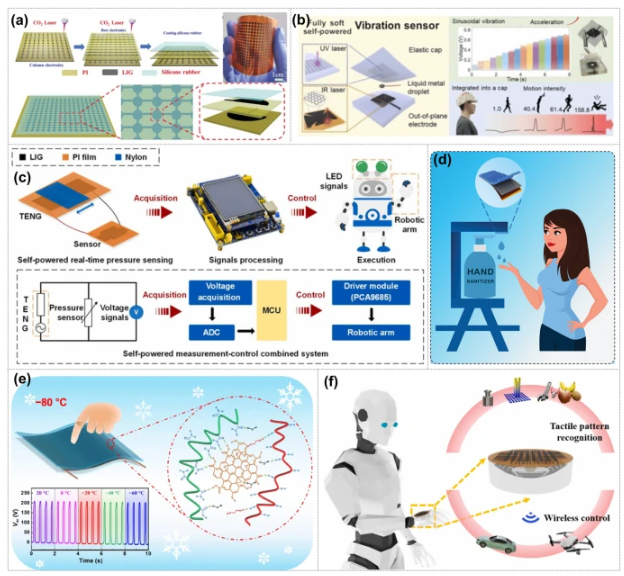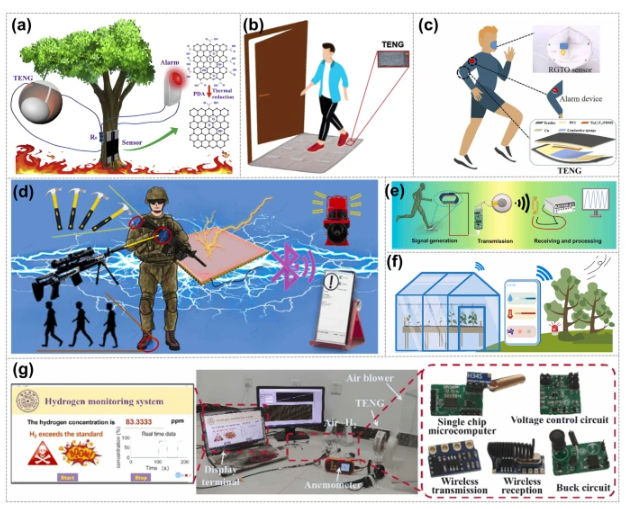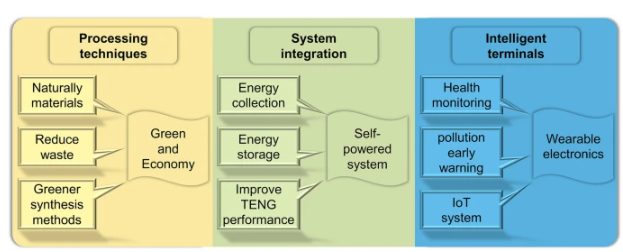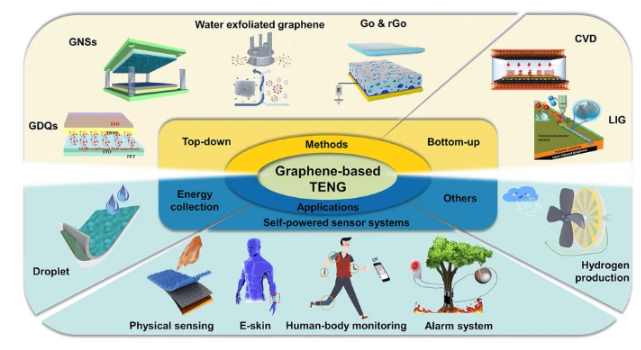Guangdong University of Technology Publishes Research on Graphene Electrodes for Triboelectric Nanogenerators in Nano-Micro Letters
Introduction
The growing demand for wearable electronics, wireless sensor networks, and other micro-electronic devices has accelerated the need for efficient, flexible, and compact energy harvesting technologies. Triboelectric Nanogenerators (TENGs), which convert small mechanical energy into electricity, offer a promising solution. However, the performance of TENGs largely depends on the electrode material. Traditional metal electrodes suffer from durability issues, limiting their potential.
Graphene, with its unique structure and excellent electrical properties, presents a superior alternative. A research team led by Professor Yun Chen from Guangdong University of Technology has recently published a paper titled “Advances in Graphene-Based Electrode for Triboelectric Nanogenerator” in Nano-Micro Letters. This review systematically outlines the latest developments, precision processing methods, and promising applications of graphene electrodes for TENGs, paving the way for future innovations.
Precision Processing Methods for Graphene Electrodes
The exceptional electrical and mechanical properties of graphene have driven demand for precise and efficient methods to manufacture graphene electrodes for TENGs. These fabrication techniques, similar to graphene synthesis processes, fall into two main categories:
- Top-down methods: Breaking down larger materials into smaller components.
- Bottom-up methods: Building up structures from molecular or atomic components.
Applications of Graphene-Based TENGs
Graphene-based TENGs are being applied across multiple fields. Below are some key application areas:
- Energy Harvesting: (Fig. 1) These TENGs capture small mechanical movements, such as vibrations, to generate power for micro-devices.

- Self-Powered Sensor Systems: (Fig. 2) Graphene enhances sensor capabilities, making TENGs suitable for real-time sensing and wireless control. This technology has seen applications in personal electronics, wearable devices, and intelligent systems that interact with users seamlessly.

- Alarm Systems: (Fig. 3) TENG-based sensors are also being used to develop high-efficiency alarm systems.
The versatility of graphene makes it ideal for energy-efficient and smart applications, offering improved performance compared to traditional materials.
Future Prospects and Outlook
The paper highlights the significant progress in graphene-based TENG technology over recent years. TENGs offer a self-powered solution for wearable devices, addressing energy supply challenges in microelectronics. Graphene electrodes, fabricated using both top-down and bottom-up methods, show improved output power, efficiency, and durability.
Graphene’s combination of flexibility, conductivity, and transparency makes it ideal for applications such as:
- Electronic skin for monitoring human motion with high precision.
- Self-powered wearable sensors with exceptional sensitivity.
- Environmental applications, such as hydrogen production and water purification.
Future research will focus on developing graphene electrodes with enhanced properties. Key advancements include:
- Doping with elements like nitrogen, boron, or transition metals, which can significantly boost graphene’s conductivity and catalytic activity, thereby improving energy harvesting efficiency.
- Surface functionalization by adding chemical groups to graphene, customizing its properties for specific applications, and enhancing electrode stability.
These developments are expected to drive the adoption of high-performance TENGs with long lifespans, high stability, and increased energy collection efficiency. Additionally, researchers are exploring other 2D materials, such as MXenes, as potential alternatives to graphene electrodes, opening new possibilities for TENG technology.
Conclusion

Graphene-based TENGs are revolutionizing self-powered wearable sensors and microelectronics. With advances in processing techniques and the development of functionalized graphene materials, this technology is set to play a vital role in the future of energy harvesting and sustainable electronics.




